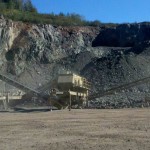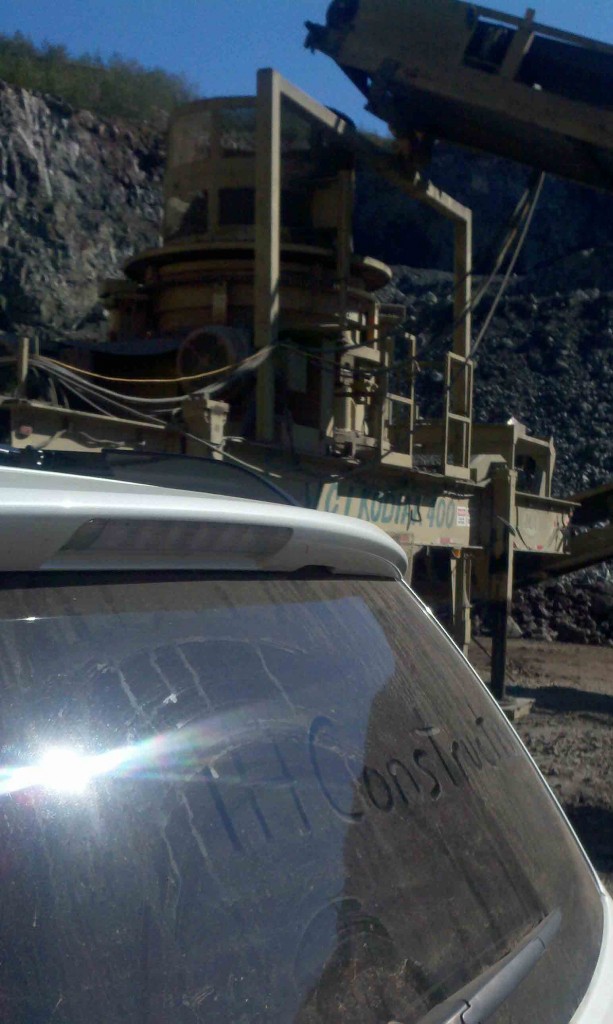Thu 14 Oct 2010
It’s still dry here in the Northwest and the crusher operations have been in full swing. This mobile, 2 cone crusher was just moved to the coast for about a six week project.  We performed airborne respirable dust monitoring and noise dosimetry on the crushing crew. We use a 37mm aluminum cyclone to obtain the respirable fraction. If you run the pump at 2.5 Liters per minute you get a balanced sample across each size in the curve -5 um (microns) and smaller. I analyze for respirable dust, crystalline quartz and cristobalite. We’ve never found trydimite in this area.
We performed airborne respirable dust monitoring and noise dosimetry on the crushing crew. We use a 37mm aluminum cyclone to obtain the respirable fraction. If you run the pump at 2.5 Liters per minute you get a balanced sample across each size in the curve -5 um (microns) and smaller. I analyze for respirable dust, crystalline quartz and cristobalite. We’ve never found trydimite in this area.
There was visible dust coming from the crusher. However exposure might be a non-issue since everyone was either in the cabs of their equipment, or in the operator’s booth. Silica exposure is nothing to take lightly. Here is a MSHA video on the subject titled, “What Does Silica Mean to You“. (windows media)
For MSHA noise dosimetry is done very similar to the OSHA methods. There are only slight difference between the two. MSHA has a nice fact-sheet here.
You can see one of the cones in the picture below (before it was running).

sweet